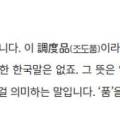기억들 나시겠지만 제 책을 읽은 독자 한 분이 블로그까지 찾아와서 지적을 한 적이 있어서 바로잡는 포스팅을 햇었죠.
아래 글 참조
https://blog.naver.com/iveen/222735021692
먼저 오타는 현재까지 2개가 발견됐습니다. 그리고 일전에 포스팅에서 썼던, 어떤 분께서 <그래도 내가 ...
blog.naver.com
이 글에서 제가 알고 있기로는 에도 시대에 정착됐다는데 시간이 될 때 조금 더 자세히 조사해 보겠다는 말을 남겼고요. 그런데 책 마무리 단계에서 이 부분에 대해 좀 더 정확히 알아 봐야겠다 싶어서 자료들을 뒤지던 중 흥미로운 글을 발견해서 여러분께 소개합니다.
그 전에 먼저, 현재는 '백성'이 '농민'의 뜻으로 정착된 게 에도 시대라는 설이 대세인 거 같은데(위키피디아의 설명도 비슷) 어떤 일본인한테 흥미로운 답변을 들은 적이 있습니다. 요약하자면 헤이안 시대 말기부터 농민이란 뜻으로 쓰이기 시작해서 카마쿠라 시대(12세기 말) 이후로는 농민이라는 뜻으로 정착됐다는 주장이었죠. 아주 의외의 답변이라서 재차 질문하니까 아주 확신에 찬 대답을 하더군요. 맞다고요.
아무튼 그때는 그냥 이렇게 주장하는 사람도 있구나 하고 넘어갔는데 오늘 이 주장을 어느 정도 뒷받침하는 자료를 발견했습니다. 상당히 긴 글 중에서 발췌해 온 것인데 보시죠.
しかし、古代末期以降、多様な生業に従事する特定の身分の呼称となった。
However, since the late ancient times, the term became a name addressing a particular social status engaged in various regular vocations.
具体的には支配者層が在地社会において直接把握の対象とした社会階層が百姓とされた。
Specifically, the social class directly ruled by the ruling class in the local societies was referred to as a hyakusho.
この階層は現実には農業経営に従事する者のみならず、商業や手工業、漁業などの経営者も包括していた。
This class included not only those who were engaged in agricultural management but also managers in commerce, handicraft, and fishery industries.
だが、中世以降次第に百姓の本分を農とすべきとする、実態とは必ずしも符合しない農本主義的理念が浸透・普及し、明治時代以降は、一般的に農民の事を指すと理解されるようになった。
However, a principle of agricultural fundamentalism stating that the sphere of hyakusho should be agriculture, which did not always match the reality, was gradually passed through and spread since the medieval period, and the term was begun to be understood generally as a person engaged in agriculture.
百姓を農民の意味とした初見は、現在のところ9世紀末に編纂された『三代実録』である。
As of now, that was "Sandaijitsuroku" (the sixth of the six classical Japanese history texts) edited in the late ninth century in which the term "hyakusho" indicated for the first time, a person engaged in agriculture.
(중략)
百姓に属する民の主体であった公民は、平安時代初期までは古来の地方首長層の末裔である郡司層によって編成され、国衙における国司の各国統治、徴税事務もこの郡司層を通じて成された。
The citizens, who were main constituents of people belonging to the hyakusho class, were organized by the gunji class, the descendants of classes of ancient local governments' heads up to the early Heian period, and the ruling and tax collection by kokushi (provincial governors) at kokuga (provincial government offices) were conducted through the gunji class.
しかし8世紀末以降、律令による編戸制、班田収授法による公民支配が次第に弛緩していくのと並行して郡司層による民の支配と編成の機構は崩壊し、新たに富豪と呼ばれる土着国司子弟、郡司、有力農民らが出挙によって多くの公民を私的隷属関係の下に置く関係が成立していく。
However, after the late eighth century, as henko-sei (the organization of the people) by the Ritsuryo and domination over the citizens by Handen Shuju ho (the law of periodic reallocations of rice land) gradually loosened, the mechanism of domination and organization of people by the gunji class collapsed, and there were established relations in which children of native kokushi who were newly called the rich and powerful class, gunji, influential farmers and other people turned many citizens into their private slaves by suiko (government loans made to peasants).
前期王朝国家
Early dynastic nation-state
そのため、国衙は国司四等官全員が郡司層を介して戸籍に登録された公民単位に徴税を行うのではなく、筆頭国司たる受領が富豪層を把握して彼らから徴税を行うようになった。
Thus, instead of having all kokushi shitokan (four officials of the provincial governor) collect tax via the gunji class from each citizen unit registered in a family registry, kokuga collected tax from zuryo, the head of the provincial governors, who grasped people of the rich and powerful class and collected tax from them.
この変化は9世紀末の宇多天皇から醍醐天皇にかけての国政改革で基準国図に登録された公田面積を富豪層に割り当て、この面積に応じて徴税する機構として結実した。
This change resulted in a mechanism in which an area of a field administered directly by a ruler and registered in the standardized map of provinces in the reform of the national administration from Emperor Uda to Emperor Daigo in the late ninth century was allocated to the rich and powerful class, and the tax was collected according to the area.
これによって10世紀以降、律令国家は王朝国家(前期王朝国家)に変質を遂げた。
As a result of this, the Japanese nation under the ritsuryo codes was changed into the dynastic nation-state, or the early dynastic nation-state, from around the 10th century.
ここで公田請作の単位として再編成された公田を名田、請作登録者を負名(ふみょう)と呼び、負名として編成された富豪を田堵(たと)と呼んだ。
A field administered directly by a ruler and reorganized as a unit of contract farming of the field was called myoden (rice field lots in charge of a nominal holder), a person who was registered as a contract farmer was called fumyo, and a wealthy person who was organized as fumyo was called tato.
こうして形成された田堵負名層がこの時代以降の百姓身分を形成した。
The tato and fumyo class thus formed constituted hyakusho rank of this period and thereafter.
앞부분에서는 농민뿐 아니라 다양한 생업에 종사하는 사람을 포괄하는 개념이었지만 중세 이후 차츰 변해 갔다는 내용이 나옵니다. 그리고 '백성'을 '농민'이라는 뜻으로 쓴 게 (현재까지)처음으로 발견된 서적(?)이 9세기 말엽에 편찬된 '삼대실록'이라고 하네요.
이 글에 나오는 田堵의 사전 뜻풀이를 볼까요?
た‐と [田×堵/田▽刀]
1. 平安時代、荘園・公領の田畑を耕作し、年貢・公事くじを納めた農民。たとう。でんと。
이번에는負名의 뜻풀이... 거의 모든 사전에 안 실려 있는데 코토방크에는 있군요.
負名
平安時代以降、古代・中世において田畑を請作(うけさく)し、所当官物(しょとうかんもつ)の貢納を請け負う人、転じてその請作地を意味した。)
그러니까 농업에 종사하는 사람들이란 말인데 이 사람들이 '백성 신분'이 됐다는 말이네요. 그 사람의 주장과 얼추 비슷한 거 같죠?
저것도 그냥 주장, 설에 불과한지 어떤지는 사학자가 아닌 저나 이웃님들로서는 알 수 없지만, 의외라고 생각했던 일본인의 말을 뒷받침하는 거 같아서 발췌해 왔습니다.
이 부분에 관심이 있는 분들은 아래에 링크 걸어 놓을 테니 한번 읽어 보십시오. 글이 길고 좀 어렵긴 한데 흥미롭기도 합니다.
그럼 오늘은 이쯤에서...

